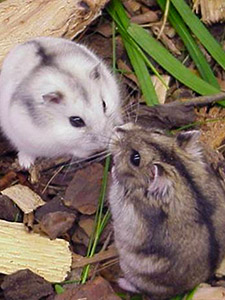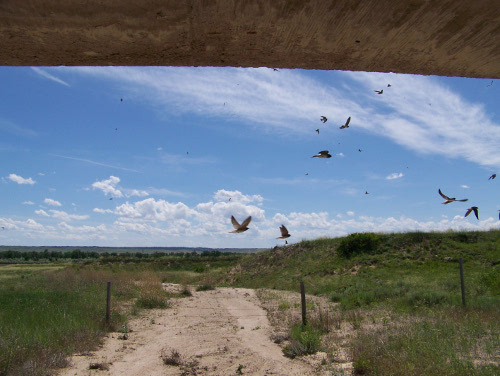SICB Annual Meeting 2014
January 3-7, 2014
Austin, TX
Symposium: Methods and Mechanisms in Ecoimmunology

It was the noted evolutionary biologist Theodosius Dhabzhansky who stated that “nothing in biology makes sense except in the light of evolution.” This oft-cited quote reflects the importance of applying an evolutionary approach to the study of biological questions. Although this almost certainly holds true for the study of ecoimmunology, an equally strong case can be made that nothing makes sense in biology without an understanding of the underlying mechanisms as well. As the concept of phenotypic plasticity has demonstrated quite nicely, not only does a particular response need to be adaptive to an organism to persist in a population, but the individual must possess the requisite physiological machinery to express a plastic response. Similarly, when examining immune responses within the field of ecoimmunology, it is important to understand not only the ecological relevance and evolutionary history of these responses, but also the underlying physiological mechanisms that mediate them. While considerable progress has been made in our understanding of the ecological and evolutionary pressures affecting immune responses across individuals, populations, and species in the last two decades alone, much less is known regarding the physiological mechanisms that mediate these responses. Uncovering these mechanisms will yield a more complete understanding of the links between an organism’s genotype and final immunological phenotype. Moreover, such mechanisms can provide predictive power in assessing which individuals and populations are most susceptible to parasitism and disease, helping us better understand disease dynamics. With recent advances in field, laboratory, and analytical techniques, ecoimmunology is poised to rapidly expand our knowledge of the physiological mechanisms underlying immune responses. To do so, however we must come together as a collective to determine the most advantageous new technologies, expose diverse scientists to their uses, and ensure the broadest applicability across taxa and study designs.

Ecoimmunology utilizes techniques from traditionally laboratory-based disciplines (e.g., immunology, neuroendocrinology, and cell biology) to elucidate how the immune systems of wild organisms both shape and respond to ecological and evolutionary pressures. However, the questions ecoimmunologists can ask are often limited by techniques that do not easily transfer to wild, non-model systems. Thus, a major focus in ecoimmunology has been developing and refining the available toolkit. Recently, this toolkit has been expanding at an unprecedented rate, bringing new challenges to choosing techniques and standardizing protocols across studies. While such techniques can vastly enhance our understanding of the mechanisms underlying variation in immunological traits in wild organisms, we must first meet the significant challenges of comparing results across species and interpreting these results in the context of organismal fitness. By confronting these challenges we will be able to enhance ecoimmune inquiries into the physiological basis of life history trade-offs; the development of low-cost biomarkers for disease susceptibility; and the investigation of the ecophysiological underpinnings of disease ecology, behavior, and the coevolution of host parasite systems. The symposium, “Methods and Mechanisms in Ecoimmunology,” will feature presentations on the technical advances in and crossover technologies from disciplines associated with ecoimmunology (e.g., gene expression, neuroendocrine regulation, remote biomonitoring, and microsphere ELISAs) and how these advances can help us understand the mechanistic basis of immunological variability in wild species. Within this context, we will highlight techniques that can be adapted to a broad array of non-model systems, and we will focus on the challenges of standardizing techniques to facilitate making comparisons across species and how these techniques are helping to elucidate mechanisms in ecoimmunology.
Sponsors: DAB, DCE, DCPB
This symposium also received funding from the NSF-RCN in Ecoimmunology.
Organizers
- Cynthia
Downs - Jim Adelman
- Greg Demas
Speakers
S4.1-1 Sunday, Jan. 5, 08:00 ADELMAN, JS:
How radio telemetry and radio frequency identification can help link individual immune responses and disease dynamics in wild animals
S4.1-2 Sunday, Jan. 5, 08:30 GARNIER, R; WATT, KA; CHEUNG, C; PILKINGTON, JG; MCNEILLY, T; PEMBERTON, JM; NUSSEY, DH:
Just how much do antibodies cost? Nutrition and humoral immunity in wild Soay sheep
S4.1-4 Sunday, Jan. 5, 09:30 SANDMEIER, F.C.*; TRACY, C.R.:
Addition of relative metabolism in the “pace of life” hypothesis: incorporating ectothermic physiology
S4.2-1 Sunday, Jan. 5, 10:30 FASSBINDER-ORTH, C:
Using molecular techniques to measure immune responses and infectious disease dynamics in non-model species
S4.2-2 Sunday, Jan. 5, 11:00 ADAMO, Shelley A:
Stress/immune interactions: A pathological relationship or an adaptive response to adverse conditions?
S4.2-3 Sunday, Jan. 5, 11:30 LONGO, A. V.*; BURROWES, P. A.; ZAMUDIO, K. R. :
Genomic Approaches to Understand Host Survival under Seasonally-Modulated Pathogen Dynamics
S4.3-2 Sunday, Jan. 5, 14:00 DOWNS, C.J.*; DOCHTERMANN, N.A.:
Statistical approaches to uncovering ecological and evolutionary causes and consequences of behavioral and physiological differences among individuals.
S4.3-3 Sunday, Jan. 5, 14:30 SCHNEIDER, DS:
Mapping infections in phase space

